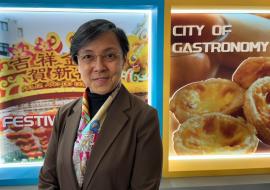Q & A with Gabriel Morell, General Manager of Varadero’s Iberostar Tainos Hotel
For the Iberostar Tainos Hotel in Cuba’s Varadero, clinching guests’ satisfaction is the name of the game. This magnificent establishment has what it takes to lure visitors from all around the world. This is what the property’s general manager had to say in this exclusive interview with Caribbean News Digital.
Q.- What are the main attributes of the Iberostar Tainos Hotel?
A.- This property is marked by an atmosphere of wellbeing, calmness and top-notch service. It’s a four-star hotel, yet it’s the number-one resort within this category in Varadero, I mean, among hotels run by Cuba’s Gran Caribe company. Our relations with this Cuban hotel chain are pretty good, based on mutual collaboration and aimed at beefing up its offers to the public.
Q.- Are you planning to do some refurbishment later this year?
A.- We’re going to shut down the hotel between September and December this year to remodel the guestrooms and the smorgasbord, to open a Japanese restaurant, add new swimming pools, a thatch-roofed ranch and redo some public areas. This much will render in better offers to our guests and a chance to take service up a notch in line with Iberostar’s standards.
Q.- What are the main outbound markets you’re dealing with right now?
A.- Germany, UK, Canada, Latin America, France, Italy and Portugal.
Q.- How’d you define the training and formation of your workforce?
A.- The staff is highly professional. The personnel has at least eight years of experience under its belt within the Gran Caribe hotel chain. They are very young, well trained and gender breakdown is adequate.
Q.- What do you think of our Caribbean News Digital newsletter?
A.- I’ve been receiving the CND since the times when I was working in the Dominican Republic and I think it’s a great newspaper in terms of the information it provides on the Caribbean. It keeps everybody in the business posted on the latest developments and gives you a big picture about the region’s evolution in terms of travel and tourism.














